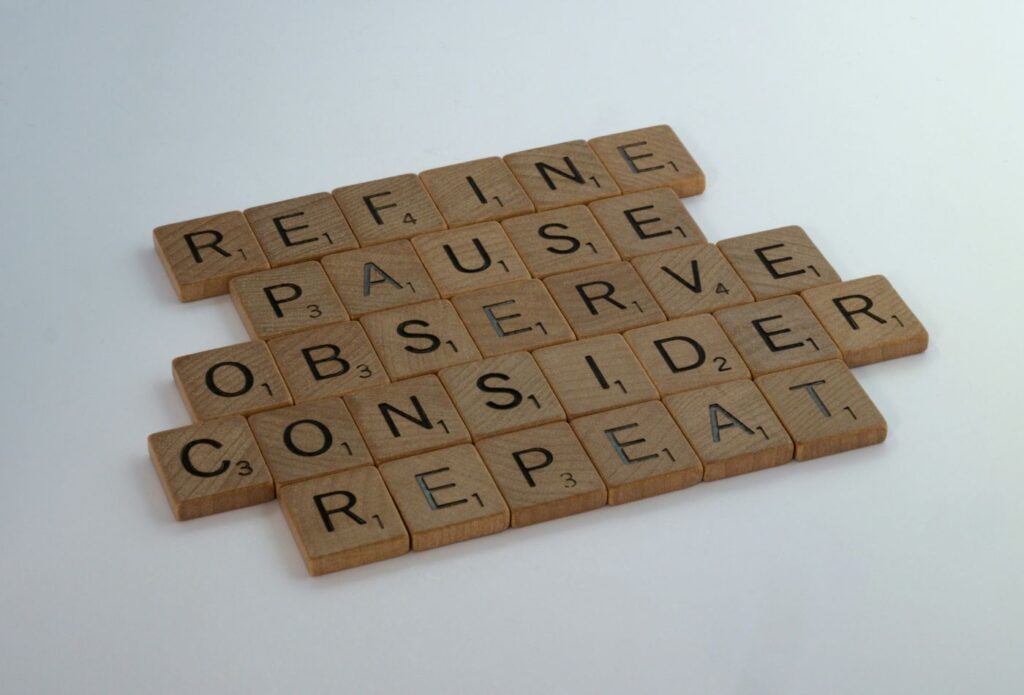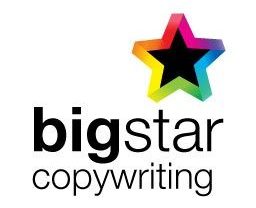
Name a brand with a memorable tone of voice. If this was a question on the content marketers’ edition of Pointless – Monzo would probably be worth top points. MailChimp, Oatly and First Direct would be up there too. These companies have a memorable tone because they know what they want to say to the world, and most importantly, they know how they want to say it. These brands will have a clear set of tone of voice guidelines so that just about anybody who types a word gets it right. Every time.
“Tone of voice reflects your brand personality, helps you connect with your audience, and makes you different from the rest” – SEMrush
But you’re not Monzo, Oatly or Mailchimp. And neither should you want to be. Monzo’s tone of voice guidelines work because they were crafted by Monzo. The informal style and tone come naturally to the brand’s writers because it is a natural voice for the business that was built to disrupt and do things differently. You’ll want to do things your way. In this blog, we share our top tips on how to create brand tone of voice guidelines.
Why do you need brand tone of voice guidelines?
Not all marketers are natural copywriters, and they don’t write all of your communications. Your CEO, sales team, customer service team etc. all need guidance on how to create a memorable tone to set your content apart. We want every sentence and every piece of content to add value.
Your business is having big, loud conversations with your audience whether it’s through your website content, social media posts, online product descriptions, the words on packaging, or the words to use to put things right with an angry customer. But there are quieter moments when someone is signing up for a newsletter, filling out a form, checking out your FAQs or clicking on a welcome email. You need a consistent tone of voice in all of these places too.
Like your logo and trademark, your brand tone of voice needs to be consistent or it loses power. The 2023 Sprout Social Index agrees as it reports that consumers want to see posts with a well-crafted voice that can transform a whisper in the social space into attention-commanding bellows. Here are five more reasons why having clear tone of voice guidelines is essential:
- It helps project your brand values and personality.
- It ensures all of your brand’s communication meets its intended purpose.
- It provides your employees with an effective framework to work to.
- It helps your brand differentiate itself in a crowded market.
- It enhances the customer experience by offering a reliable brand.

What do we mean by tone of voice?
Here’s a good, jargon-free definition from SEMRush: ‘Tone of voice reflects your brand personality, helps you connect with your audience, and makes you different from the rest’. It’s everything from the words you use and the way you structure your sentences, to the emotions your words convey and the way you address your audience. Your tone of voice guidelines should include or cover:
- A clear definition of your brand’s personality, including its traits and how these might be reflected in communication.
- Recognition of your target audience, including how they may be addressed, and the tone used when directly conversing with them.
- Specific voice or tone attributes (more on this later) and examples to provide clarity.
- The preferred language style and guidelines for specific industry-related terminology or jargon.
- A guide on how to adapt the tone of voice across various content formats.
- Style considerations include punctuation, emojis and numbers.
You’ll have spent a lot of time and effort getting your visual identity right – but it’s equally as important that you get your verbal identity right too. Here’s the thing. All the work you’ve done on tone of voice is worthless without comprehensive accompanying guidelines. And as you’ll see above, there’s lots to consider – so let’s get started.
How to create strong guidelines in 3 simple steps
1. Find your voice
Your audience wants to know what makes your brand tick. What makes you different? They hear the answers to all of this through your brand voice and the emotions used in your communications.
Your audience won’t necessarily get to know your people – so they will look for personality traits in your brand that they can identify with. Your personality is the embodiment of why you do the things you do and how you go about doing them.
Your voice is the distinct personality your company takes on in all of your communications – it’s consistent and unchanging.

Here are a few questions to think about to start defining your voice:
- Mission – your brand voice needs to reflect your mission (if you haven’t already drafted a mission statement, now is the time to do so)
- Values – what does your brand stand for?
- Personality – how would you describe your brand’s personality to a friend?
- Audience – who are you writing for? What types of content already resonate well with your audience?
- Content – how does your voice already sound? What do you need to dial up or dial down?
- Feedback – ask a customer or somebody outside of your company how they would describe your business in three words.
Here’s a good snippet from MailChimp’s voice and tone guidelines on how it describes its brand voice. ‘Whether people know what they need from us or don’t know the first thing about marketing, every word we say informs and encourages. We impart our expertise with clarity, empathy, and wit’.
2. Set the right tone
What tone should your writers adopt to consistently get your brand voice across? Nielsen Norman Group identified 4 dimensions of tone of voice:
- Formal vs informal
- Serious vs humorous
- Respectful vs irreverent
- Enthusiastic vs matter-of-fact
Once you’ve decided where your brand falls in each dimension, you can then start to build a list of tone characteristics. So for humorous for example – should your tone of voice be dry, witty etc?
Here are a few common tones of voice traits:
- Encouraging, inspirational, uplifting
- Assertive, confident, aggressive
- Friendly, informative, empowering,
- Curious, daring
- Direct, straightforward, no-nonsense
- Dry, upbeat, witty

A quick word on humour – Some brands naturally have funny bones, and they effortlessly use humour in their content. Some brands need more time to test their material. This is what MailChimp has to say about this.
‘MailChimp has a sense of humour so feel free to be funny when it’s appropriate and when it comes naturally to you. But don’t go out of your way to make a joke – forced humour can be worse than none at all.
If you do get stuck for inspiration when pinpointing your brand’s tone or finding the types of words that describe your tone of voice – here’s a helpful list of 37 words from Nielsen Norman. Remember – your tone will naturally change depending on the type of communication and the context of the piece, message or situation. It needs to be natural and you shouldn’t force something that your brand certainly is not.
3. Think about style and language
What style should your writers adopt and what type of language should they use? If you haven’t got a full style guide – include a short paragraph on style and language.
For example, should the writer:
- Always use an ‘active’ voice?
- Avoid jargon and industry-speak and use plain English.
- Avoid using specific words or phrases.
- Write short paragraphs and sentences.
- Follow the house style on images?
However, if you’re working with a big team or if you are publishing large quantities of content frequently, a more in-depth style guide is important. To create a style checklist for an in-house or external copywriter to follow, you should:
- Choose a specific style guide for grammar and punctuation – this could be AP Style or Chicago Manual.
- Offer clarity on common grammar issues – and don’t be afraid to always follow traditional rules if they fit with your brand personality.
- Establish rules for formatting, including heading, subheadings and paragraph or sentence length.
- Create a list of approved words.
- Specify words to avoid or use sparingly.
- Suggest ways a writer can be consistent when it comes to the usage of industry or product-related terms.
- Pinpoint ways you can be inclusive in your writing.

What else should your tone of voice guidelines include?
So, you’ve pinpointed your tone of voice, but how do you put this together in a clear guideline document? These tips should help:
Use real-world examples
Include examples to give writers a clear understanding of how to apply these principles. Here’s a good example from First Direct. Banking is a serious business, but the First Direct social media help team are masters at using a relaxed, friendly, informative tone – and language – to reassure customers. However, as much as you show people good examples of how you should communicate, it’s important to show your writers how they shouldn’t communicate. These non-examples will make it explicitly clear what works and what doesn’t.

Be clear and specific
Don’t be ambiguous in your descriptions of your brand’s tone of voice. It needs to be clear and concise if you want your writers to truly understand how they should craft compelling copy. Keep the guidelines simple, avoid waffle and, most importantly, write in the tone and style you want others to replicate.
Consider multiple channels
The way you address your audience on your website is likely to be a little different to how you speak to them on social media. While Instagram, Twitter and Facebook can act as a bit of a content playground for brands, offering them the chance to experiment with various campaign ideas, your website content should be a little more robust. Your website content will need to consider things like SEO optimisation and keyword distribution, whereas your social media content may not need to be taken seriously. Consider these differences in your tone of voice guidelines and how you’d expect to communicate with your audience on each platform.

Don’t try too hard
Don’t try to be ‘someone’ you’re not. Readers are looking for an authentic voice that reflects who your brand is. They will see through any content that tries too hard. With a robust set of brand tone of voice guidelines, writers will be able to adopt any tone of voice – but your brand voice needs to ring true in everything you communicate. If your business isn’t fleek, don’t use words like this in your writing.
Apply liberally
Your brand guidelines should be accessible online (no excuses) so use any cloud storage system of choice like Google Drive. Display them around the office, in the kitchen. Post them on your website. Your team needs to learn this stuff by rote. Share with any outside content creators, agencies, partners, designers and stakeholders.
Test and refine
Before finalising your tone of voice guidelines, conduct tests by applying them to real-world scenarios. Gather feedback from both internal and external sources to identify areas for improvement and refine the guidelines accordingly. Your customers will be able to show you what works well and what doesn’t, as well as the people who have worked with your brand for a while. You don’t need to strike brand tone of voice guidelines out of nowhere, you can work with the people who know your brand inside out to help you find the right words to say.

How long should your guidelines be?
How long is a piece of string? As a rough guide, one page is long enough. Clarity is the catchword here. Pages of tone of voice guidelines just mean pages of confusion.
How to implement and enforce tone of voice guidelines
Implementing your tone of voice guidelines well is just as important as creating them. If you aren’t regulating their enforcement, chances are mistakes might be made. Here’s how to implement your brand guidelines when working with in-house or agency copywriters:
- Communication: Clearly communicate the existence and importance of tone of voice guidelines to all relevant stakeholders within the organisation. Hold a team meeting to discuss and run through your new guidelines, including how to follow them.
- Training sessions: Conduct training sessions to educate team members on the guidelines, providing examples and practical insights.
- Keep your documentation up to date: Create a comprehensive document outlining the tone of voice guidelines. Ensure it’s easily accessible to all team members.
- Integrate your guidelines into onboarding procedures: Integrate tone of voice guidelines into employee onboarding processes to ensure new team members are aware of and understand the guidelines.
- Monitoring progress and offering feedback: Establish a monitoring system to track adherence to the guidelines. Regularly review content to ensure consistency and work with your copywriters who need support.
- Update guidelines as needed: Regularly review and update the guidelines based on feedback, changes in brand strategy, or evolving industry trends.
The tone of voice templates
Need a visual example to help you format your tone of voice guidelines? Here are our favourite tone-of-voice templates:
- Brand tone of voice guidelines by Niice.
- Hands-on tone of voice guidelines by Pitch.
- Conversational voice and tone guide by Get Guru.
The tone of voice examples
Most brands at the top of their game know a thing or two about developing a clear tone of voice. Content marketing is all about making a lasting impression and we wrote a blog that shares the best tone of voice examples in the game. You can read that here and we definitely recommend adding that to your TBR before creating your own epic guidelines.

Final Thoughts
We hope you found our guide on how to write brand tone of voice guidelines useful. They take some time to craft, but once you have a definitive tone for your business, it’ll make a huge difference to internal and external communications. To recap:
- Turn to your brand values, mission and target customer to help you pinpoint your brand personality and voice.
- Choose the right words that sum up your tone.
- Include a detailed style guideline – it’s just as much about what you say as it is about how you say it.
- Use both examples and non-examples to showcase exactly what it is you want.
- Help your copywriters get to grips with the tone of voice guidelines.
- Apply your brand guidelines liberally but be prepared to edit or refine them.
How can we help?
We’ve been providing high-quality professional copy for brands of all sizes since 2005. We know how to get to the heart of your brand and write content that resonates with your audience while showing the world exactly who you are and why you do what you do. Need help pinpointing your brand voice? Get in touch – we’d love to help.
